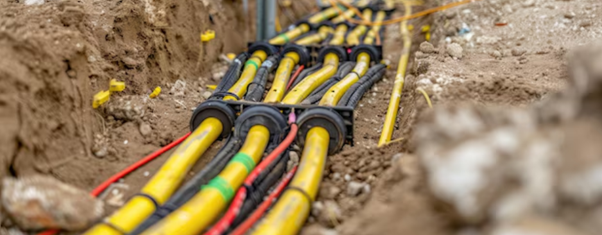In the tapestry of modern infrastructure, underground utilities play a pivotal yet often overlooked role. These hidden networks—encompassing water, sewer, gas, and electricity systems—are integral to the functioning of our daily lives. Though they may remain out of sight, their importance cannot be overstated. Understanding the role and significance of underground utilities helps us appreciate their contribution to safety, efficiency, and convenience in urban environments.
The Structure of Underground Utilities
Underground utilities refer to the infrastructure elements buried beneath the surface of streets and properties. These systems are essential for the provision of critical services. For instance, water lines deliver potable water to homes and businesses, sewer lines manage wastewater, gas pipelines supply fuel for heating and cooking, and electrical cables ensure power distribution.
Each type of underground utility is meticulously designed and installed to meet specific needs and safety standards. Water pipes are typically made from durable materials like PVC or ductile iron, which are capable of withstanding pressure and preventing leaks. Sewer lines are engineered to handle waste and resist corrosion. Gas pipelines are constructed to endure high pressures and are equipped with leak detection systems, while electrical cables are insulated and often encased in protective conduits.
Why Underground Utilities Matter
- Safety and Aesthetics
One of the primary reasons for placing utilities underground is safety. Above-ground utility lines can pose hazards during severe weather conditions. High winds, ice storms, or even falling branches can damage overhead power lines, leading to outages or fires. By contrast, underground utilities are shielded from such risks, reducing the likelihood of accidents and service interruptions.
Aesthetic considerations also play a significant role. Overhead lines and poles can clutter the skyline and detract from the visual appeal of urban areas. Underground utilities contribute to a cleaner, more attractive environment, enhancing the overall quality of life and property values.
- Reliability and Maintenance
Underground utilities tend to offer greater reliability compared to their above-ground counterparts. They are less susceptible to damage from external factors such as weather, vandalism, or accidents. This resilience translates into fewer service disruptions and more consistent delivery of essential services.
However, while underground utilities are generally more reliable, they do require regular maintenance and inspection. Advanced technologies, such as remote sensing and automated diagnostic tools, help monitor these systems for leaks, blockages, or other issues. Prompt detection and repair are crucial to preventing more significant problems and ensuring uninterrupted service.
- Urban Planning and Development
As cities and communities grow, effective urban planning becomes essential. Incorporating underground utilities into infrastructure planning allows for more flexible land use. With utilities buried out of sight, developers can utilize surface space more efficiently, whether for parks, commercial spaces, or residential areas.
Moreover, underground systems support future development by accommodating changes in technology and usage patterns. For instance, as electric vehicles become more prevalent, the need for additional charging infrastructure can be more easily integrated into existing underground utility networks without disrupting the urban landscape.
Challenges and Considerations
Despite their advantages, underground utilities come with their own set of challenges. One major issue is the complexity and cost of installation. Laying underground pipes and cables requires careful planning, excavation, and adherence to regulations. The process can be labor-intensive and expensive, particularly in densely populated areas.
Another challenge is the potential for utility conflicts. When multiple utility lines are installed in the same area, there is a risk of interference or damage during maintenance or construction work. Coordination among utility providers and meticulous planning are essential to avoid such conflicts and ensure the integrity of each system.
Conclusion
Underground utilities form the backbone of modern infrastructure, supporting a wide range of essential services while contributing to the safety, reliability, and aesthetics of urban environments. Their hidden nature belies their critical importance, as they operate seamlessly beneath our feet, enabling the conveniences and comforts we often take for granted.
Understanding the role of underground utilities not only fosters appreciation for these hidden networks but also highlights the need for ongoing investment in their maintenance and development. As cities continue to evolve and expand, the significance of underground utilities will only grow, underscoring the importance of safeguarding and optimizing these vital systems.



